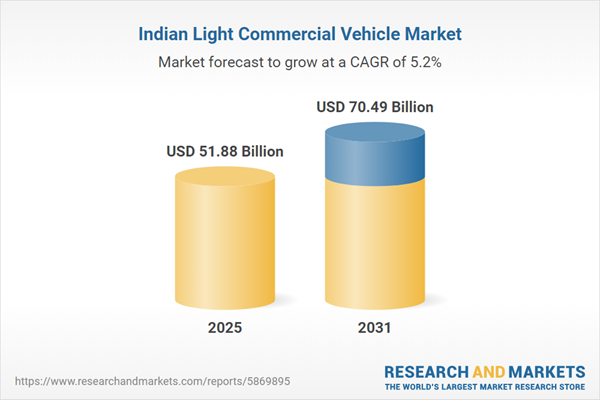Speak directly to the analyst to clarify any post sales queries you may have.
10% Free customizationThis report comes with 10% free customization, enabling you to add data that meets your specific business needs.
Technological advancements in vehicle efficiency, compliance with stricter emission norms, and enhanced safety features are influencing buyer decisions. E-commerce growth and demand from FMCG and pharmaceutical sectors continue to drive vehicle replacement cycles and fleet expansions. The integration of telematics in LCVs is also streamlining fleet management and reducing operational costs. According to SIAM, LCV domestic sales in India decreased slightly from 6.03 lakh units in FY 2022-23 to 5.95 lakh units in FY 2023-24, while overall commercial vehicle sales increased marginally to 9.68 lakh units.
Market Drivers
E-commerce Expansion
The rapid expansion of the e-commerce sector has created strong demand for efficient last-mile delivery vehicles. Light commercial vehicles are well-suited for navigating congested urban streets while offering sufficient payload capacity. As online shopping becomes more popular across both urban and rural India, logistics and courier companies are scaling up their LCV fleets to ensure faster deliveries. This shift is also prompting small and medium enterprises to invest in such vehicles to meet consumer expectations for speed and reliability. The Road Transport Yearbook 2023 indicates that intra-city freight movement accounts for more than 60% of LCV utilization, emphasizing their role in urban goods transport.Key Market Challenges
Fuel Price Volatility
High and unpredictable fuel costs severely impact operational budgets for fleet operators and small transport businesses. Fuel represents a significant portion of running expenses for LCVs. This volatility discourages potential buyers from expanding or upgrading their fleets. In areas lacking CNG infrastructure, reliance on diesel further heightens exposure to fluctuating costs, reducing long-term profitability for vehicle owners.Key Market Trends
Electrification of LCVs
Electric light commercial vehicles are gradually entering India’s logistics market. Their suitability for short-distance deliveries and lower running costs make them ideal for urban operations. Fleet electrification is supported by government subsidies and state-level EV policies. Advances in battery range and vehicle affordability are accelerating their integration into use cases such as courier services, food delivery, and retail distribution. As per the Ministry of Heavy Industries, electric LCV adoption in India crossed 8,000 units in 2023, supported by FAME-II incentives and state-level EV policies, indicating a shift toward sustainable commercial transport.Key Market Players
- Ashok Leyland Limited
- Eicher Motors
- Force Motors Limited
- Mahindra & Mahindra Ltd.
- Maruti Suzuki India Limited
- Piaggio Vehicles Private Limited
- SML Isuzu Limited
- Tata Motors Limited
- Toyota Motor Corporation
- VE Commercial Vehicles Limited
Report Scope:
In this report, the India Light Commercial Vehicle Market has been segmented into the following categories, in addition to the industry trends which have also been detailed below:India Light Commercial Vehicle Market, By Vehicle Type:
- Pickup Trucks
- Vans
India Light Commercial Vehicle Market, By Propulsion Type:
- ICE Vehicles
- Electric Vehicles
India Light Commercial Vehicle Market, By End User:
- Individual
- Fleet Owner
India Light Commercial Vehicle Market, By Region:
- West
- East
- North
- South
Competitive Landscape
Company Profiles: Detailed analysis of the major companies present in the India Light Commercial Vehicle Market.Available Customizations:
With the given market data, the publisher offers customizations according to the company’s specific needs. The following customization options are available for the report.Company Information
- Detailed analysis and profiling of additional market players (up to five).
Table of Contents
Companies Mentioned
- Ashok Leyland Limited
- Eicher Motors
- Force Motors Limited
- Mahindra & Mahindra Ltd.
- Maruti Suzuki India Limited
- Piaggio Vehicles Private Limited
- SML Isuzu Limited
- Tata Motors Limited
- Toyota Motor Corporation
- VE Commercial Vehicles Limited
Table Information
| Report Attribute | Details |
|---|---|
| No. of Pages | 70 |
| Published | August 2025 |
| Forecast Period | 2025 - 2031 |
| Estimated Market Value ( USD | $ 51.88 Billion |
| Forecasted Market Value ( USD | $ 70.49 Billion |
| Compound Annual Growth Rate | 5.2% |
| Regions Covered | India |
| No. of Companies Mentioned | 10 |









